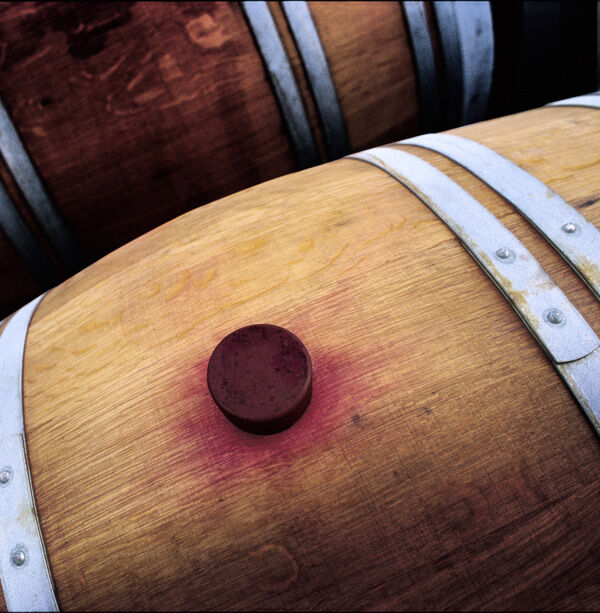Are you sure you want to remove this item?
You will be logged-out on changing the country.
Do you wish to continue?
Your cart will be emptied on changing the country.
Do you wish to continue?

Welcome to the historic wine-ageing tunnels of Beringer Vineyards, which are fondly referred to as “wine caves”.
Beginning in 1876, Beringer Vineyards was the first winery to create these perfect wine-ageing environments by digging into the hillside.
During the excavations for the building site for the winery building (now the Old Winery) Jacob Beringer made the fortunate discovery that the hillside beyond the foundation was almost solid limestone and was perfect for excavating tunnels for barrel ageing.
By the end of 1879, the limestone caves were sunk into the mountain 70 feet when Jacob made the decision to “drift” from the main tunnel, cutting chambers on both sides. He calculated that it was cheaper to tunnel for cellar space than construct more outside buildings. It was a decision that would forever establish the unique character of the winery, as compared to others in the Napa Valley.
Set hundreds of feet into the limestone mountainside, the labyrinth of caves keep a perfect year-round temperature of 58 degrees (there is no air-conditioning in this space, it is completely natural) and the black moss keeps the air dry and pure – perfect conditions for ageing wine. Since 1876, we have seen no change to this.
The caves were dug by hand using pickaxes and shovels and have never felt the tooth of a road header. Taking fifteen years to complete (1876-1891), the labyrinth consists of two parallel tunnels approximately 400 feet long, connected by two cross tunnels. There are several shorter tunnels and little rooms emanated off the major long runs. The cave size is 13,000 square feet.
In 1972, the wine-ageing tunnels were extensively renovated. Collapsing timbers were taken out, and concrete footings, pillars and floors were installed incorporating steel arches and backfilling with gunite, giving them new life and use.
How do we age our wines?
At Beringer, we age our wines mostly in French Oak, from the Nevers region, and the standard size of the barrel is 225 liters, 60 gallons. Each barrel holds about 300 bottles of wine, 25 cases. Today, we produce over 250,000 cases each vintage for our luxury portfolio, using over 10,000 barrels.


.jpg)
Fun Barrel Facts – how many of these do you already know?
· Wine was originally stored in clay amphorae otherwise known as “stone jars”.
· Wood barrels became popular during the Roman Empire, to transport large quantities of wine to their troops. This is when it was discovered that the wood had a positive influence on the wine and wine ageing became an integral part of the winemaking process.
· A barrel maker is called a cooper. If you know someone with that last name, chances are they are descendants of a brewer, distiller or winemaker.
· Oak is split into staves or strips along the grain. After it is split, it is allowed to “season” or dry. This can take anywhere from 10 to 36 months. The longer the wood is allowed to season, the softer the wine being aged in those barrels will be.
· The staves are heated over a wood fire, a process to prepare the aromatic finishing of the barrel. When pliable they are bent to the desired shape of the barrel and held together with iron rings.
· Barrels come in a variety of finishes. Light Toast, which brings the fruit aromas to the front; medium toast, which is fruit dominant and has a very intense aromatic complexity; Heavy Toast, which has spicy and grilled aromas.
· A cooper typically constructs one barrel a day.
· Barrels give off the most color, texture and aroma influence to the wine in their first year. We typically will only use a barrel for 3 vintages, as it will lose its flavor impact the more it is used, like a teabag does. After winemaking, the barrels will be recycled being used for ageing bourbon, making great planters and furniture.
· The size of the barrel matters. The larger the barrel used, the less oak lactones and oxygen are imparted into a wine.
· Oak has 3 main influences on ageing wine: it adds flavor compounds, it allows the slow ingress of oxygen making the wine smoother and less astringent, and it provides a suitable environment for metabolic reactions to occur.
· Exploring the flavor compounds, the oak barrel is like a spice rack, imparting different flavors into the wine – French oak typically tastes of dark chocolate, coffee and spices and American Oak is more aromatic with sweeter tastes of vanilla and coconut.
· Our iconic Private Reserve Cabernet is aged 20 months in French Nevers Oak. A lighter red wine, like our Winery Exclusive Pinot Noir, only needs to be aged for 9 months in the French oak barrels.
· Nevers is a group of forests located within the Départment of Nievre in central France. This region in France consists of gently rolling hills that are rich and moist, and produce tall, straight, evenly grained trees.
· The oak in Nevers has a medium-tight grain and is primarily used for big reds.
· Oak barrels can be reused for 100 years. The wood is very durable and improves with age.